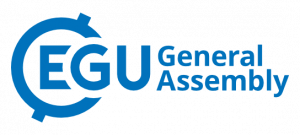NH8.3 - Asbestos and asbestiform minerals: state of the art and strategies for investigation and mitigate the risk
Dettagli: https://meetingorganizer.copernicus.org/EGU2019/session/32503
La sottomissione degli abstracts è aperta! SCADENZA: 10 gennaio 2019, ore 13:00 CET.
Rosalda Punturo, Andrea Bloise e Dolores Pereira
Dear colleagues and friends,
We would like to bring to your attention the following session at the next EGU General Assembly in Vienna (7 - 12 April, 2019):
NH8.3 - Asbestos and asbestiform minerals: state of the art and strategies for investigation and mitigate the risk
Abstracts submission for EGU 2019 is now open!!
We strongly encourage you to submit an abstract; (the abstract submission deadline is 10th January 2019, 13:00 CET.).
Abstract submission: https://meetingorganizer.copernicus.org/EGU2019/session/32503
Guidelines for abstract submission can be found at:
https://egu2019.eu/abstracts_and_programme/how_to_submit_an_abstract.html
We are looking forward to see you in Vienna!
Rosalda Punturo, Andrea Bloise, Dolores Pereira
NH8.3 Session details
In the last decades, there has been increasing interest in natural occurrences of asbestos and asbestiform minerals as a source of possible environmental risk. A crucial theme of interest related to environmental pollution is the enhanced mobilization of asbestos or asbestiform minerals affecting sois and rocks, due to human activities (e.g., road construction, excavation, mining) in comparison with natural weathering processes. Moreover, when weathering affects basic and ultrabasic rocks, some naturally occurring potentially harmful elements (e.g., Cr, Ni, Co, V) become enriched in waters and soils. The session deals with the state of the art knowledge of processes that involve the rock story, from natural outcrops to the quarry's products as building materials, with implications due to airborne mineral fibres. Also on proper characterization of stones, such as serpentinite, to avoid conflicts when opening or re-opening quarries and using these kind of rocks in construction and/or restoration. Moreover, we are particularly interested in contributions presenting novel and classical approaches for asbestos recycling and outcrop mapping, together with possible solutions for reducing or remove asbestos exposure.

